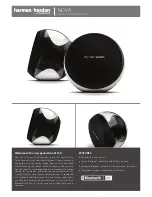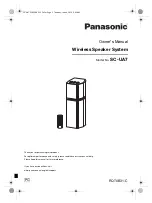
Parts dismantling and re-installation procedure
153
11.9)
Board 15.14.240
- Disconnect connectors CN1 and CN2 and unscrew the three
screws fixing the board to the copper bars.
For assembly, repeat the above operations in reverse order.
11.10)
Rectifier circuit diode
Each diode can be disassembled only after removing board
15.14.240 and the copper bar above the diode.
- Unscrew the screws fixing the component to the radiator.
Assembly:
- thoroughly clean the radiator and apply a thin uniform layer
of thermal paste (code 16.03.102) on the surface of the
power component;
- fix the power component on the radiator by means of the
screws.
IMPORTANT! To insert the component correctly as
indicated in point 14, the component terminals must
be correctly identified using a tester set to diode
testing.
NOTE :
the torque wrench is not necessary for reassembling the
diodes. When fixing to the copper bars, however, you should
take the precaution of first applying all the screws and tightening
them afterwards.
11.11)
Fan
The fan can be disassembled only after removing the rear pla-
stic panel.
- Unscrew the two fixing nuts, one at the top and one at the
bottom of the fan.
To refit, carry out these jobs in reverse order.
11.12)
Capacitor (connected to board 15.14.254)
Remove the two nuts fixing the capacitor to board 15.14.254
and the nut fixing the L- shaped support to board 15.14.233
(see point 15 in figure).
11.13)
Varistor (on board 15.14.233, see point 16 in figure)
The varistor can be disassembled with the capacitor already
removed and after checking the condition of the tracks, the
other electronic components and the component fixing holes.
Assembly/disassembly do not require any particular precautions.
11.14)
Diode bridges (on board 15.14.233)
The bridges can be disassembled with part 15.14.233 already
removed.
- Shear one terminal at a time inserting a pair of cutting nippers
in the gap (a few millimetres) between the component itself
and the printed circuit.
- Free the printed circuit pc-board paths from the remaining part
of the terminals.
For assembly, follow the operations described for assembly of
board 15.14.225.
11.15)
Auxiliary transformer
- Unscrew the fixing nut and remove the transformer from its
housing.
- Disconnect the connectors from board 15.14.233 and, in the
G 240 TLH, from the front panel.
To refit, carry out these jobs in reverse order.
11.16)
Fixed socket
Removal is quite a difficult operation and is performed with the
front panel already removed.
- Disconnect the power cable.
- Unscrew the socket fixing bolt and slide it out of the front part.
To refit, carry out these jobs in reverse order.
11.17)
Front panels FP104 or FP106
- Remove the four plastic front panel fixing screws.
- Remove the connectors from board 15.14.236.
For assembly, follow the above operations in reverse order.
11.18)
Rear panels FP114 or FP113
Generally speaking, it is simply a question of moving the panel
away to access other parts of the machine.
For this purpose, in the case of FP114 (G 240), simply remove
the four plastic panel fixing screws.
In the case of FP113 (G 240 TLH) the solenoid valve must be
removed first, by unscrewing the nipple and then the two screws
securing the solenoid valve supporting bracket.
11.19)
Plastic base
To remove the plastic base (when present) unscrew the four screws
next to the non-slip feet (see point 17 in figure).
11.20)
Metal base
The metal base can be disassembled with the plastic base or cooling
unit (depending on which component is fitted) already removed.
Unscrew the eight fixing screws.
Summary of Contents for Genesis 240 TLH
Page 1: ...REPAIRS MANUAL E N G L I S H Genesis 240 Genesis 240 TLH...
Page 9: ...Description of machine operation 91 n m k a o q r l c b i p j d s e f g h e FIG 6...
Page 11: ...Description of machine operation 93 n m k a o q r l c b i p j d s e f g h e FIG 8...
Page 22: ...LAY OUTS OF CARDS...
Page 23: ...Lay outs of cards 105 Card 15 14 233 Fig 20...
Page 24: ...106 Lay outs of cards Card 15 14 236 side A Fig 21...
Page 25: ...Lay outs of cards 107 Card 15 14 236 side B Fig 22...
Page 26: ...108 Lay outs of cards Card 15 14 236 side C Fig 23...
Page 27: ...Lay outs of cards 109 Card 15 14 254 side A Fig 24...
Page 28: ...110 Lay outs of cards Card 15 14 254 side B Fig 25...
Page 29: ...Lay outs of cards 111 Card 15 14 254 side C Fig 26...
Page 30: ...112 Lay outs of cards Card 15 14 254 side D Fig 27...
Page 31: ...Lay outs of cards 113 Card 15 14 192 Fig 28...
Page 32: ...114 Lay outs of cards Card 15 14 239 Fig 29...
Page 33: ...Lay outs of cards 115 Card 15 14 240 Fig 30...
Page 58: ...140 Diagnosis procedure J9 connector frontal side FIG 36 Card 15 14 192 FIG 37...
Page 59: ...Diagnosis procedure 141 FIG 38 Card 15 14 233 FIG 39...
Page 60: ...142 Diagnosis procedure Card 15 14 254 version 1 soldering side FIG 40A...
Page 61: ...Diagnosis procedure 143 Card 15 14 254 version 2 soldering side FIG 40B soldering side view...
Page 62: ...144 Diagnosis procedure Card 15 14 236 FP106 FIG 41...
Page 63: ...Diagnosis procedure 145 FIG 43 H F 15 14 192 wring diagrama FIG 42...
Page 64: ...146 Oscillograms Oscillogram 1 Oscillogram 2...
Page 65: ...Oscillograms 147 Oscillogram 3 Oscillogram 4...
Page 66: ...148 Oscillograms Oscillogram 5 Oscillogram 6...
Page 67: ...Oscillograms 149 Oscillogram 7 Oscillogram 8...
Page 68: ...150 Oscillograms Oscillogram 9 Oscillogram 10...
Page 69: ...Oscillograms 151 Oscillogram 11...
Page 73: ...Parts dismantling and re installation procedure 155 FIG 44...
Page 74: ...156 Parts dismantling and re installation procedure FIG 45...
Page 75: ...Parts dismantling and re installation procedure 157 FIG 46 FIG 47...
Page 76: ...158 Parts dismantling and re installation procedure FIG 48...
Page 79: ...Operating tests and settings 161 Card 15 14 239 FIG 49...
Page 80: ...162 Operating tests and settings Card 15 14 254 FIG 50...
Page 81: ...Operating tests and settings 163 FP106 FIG 51...












































